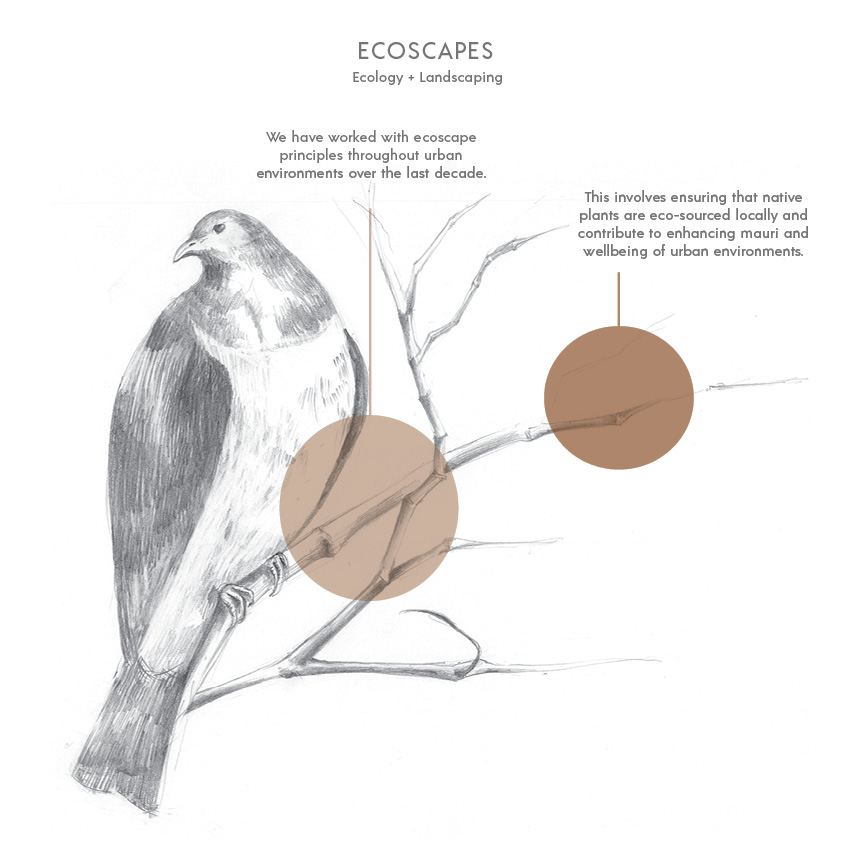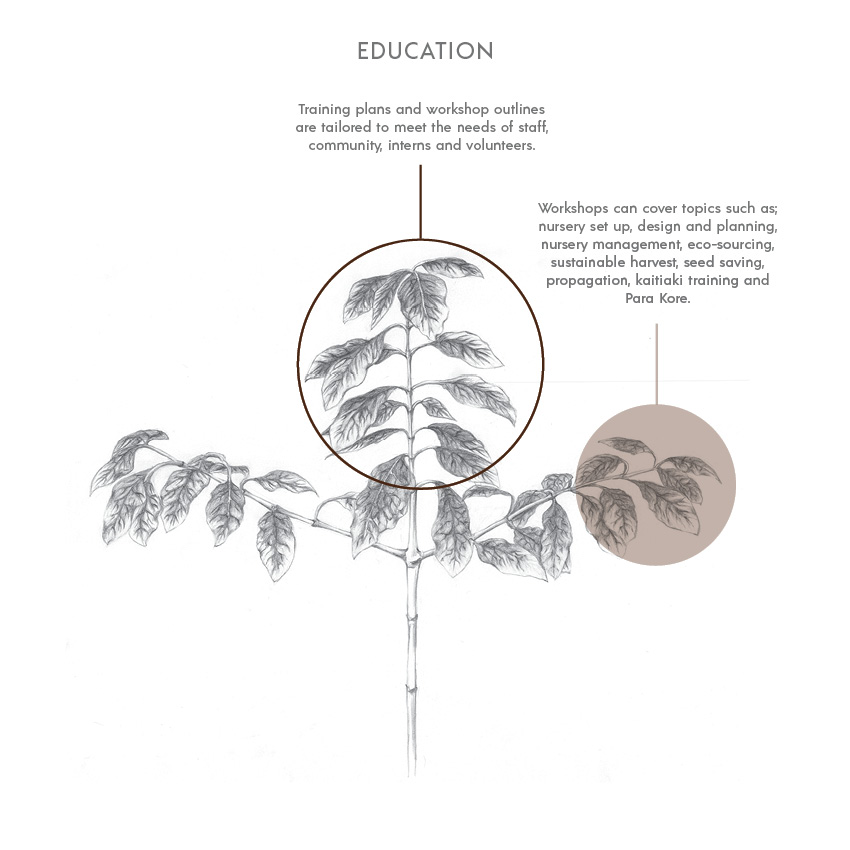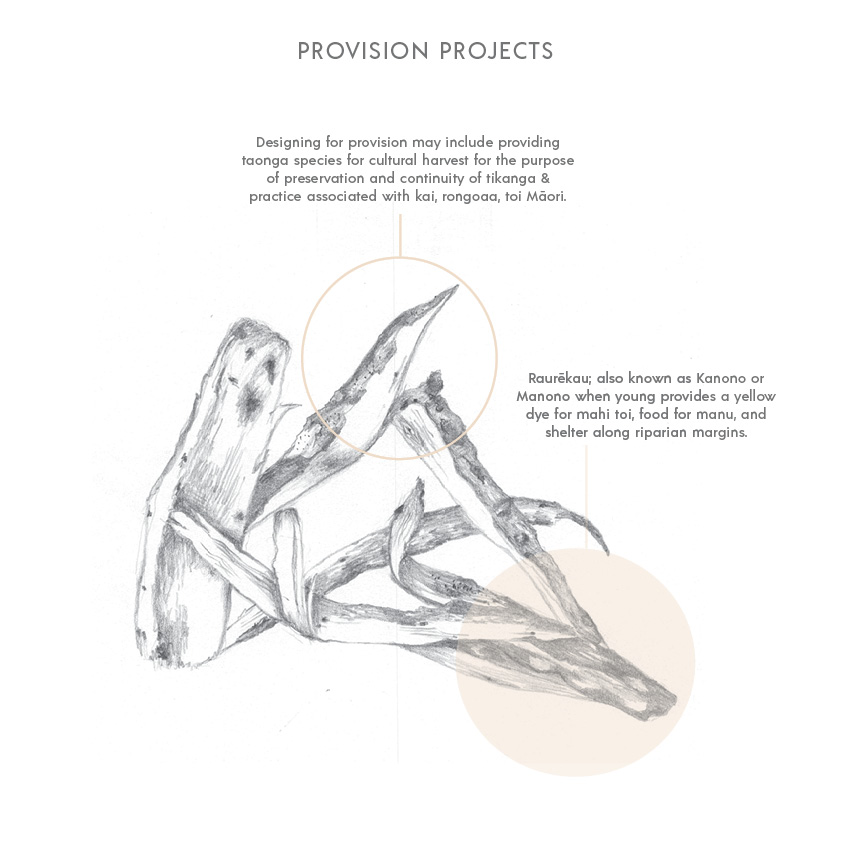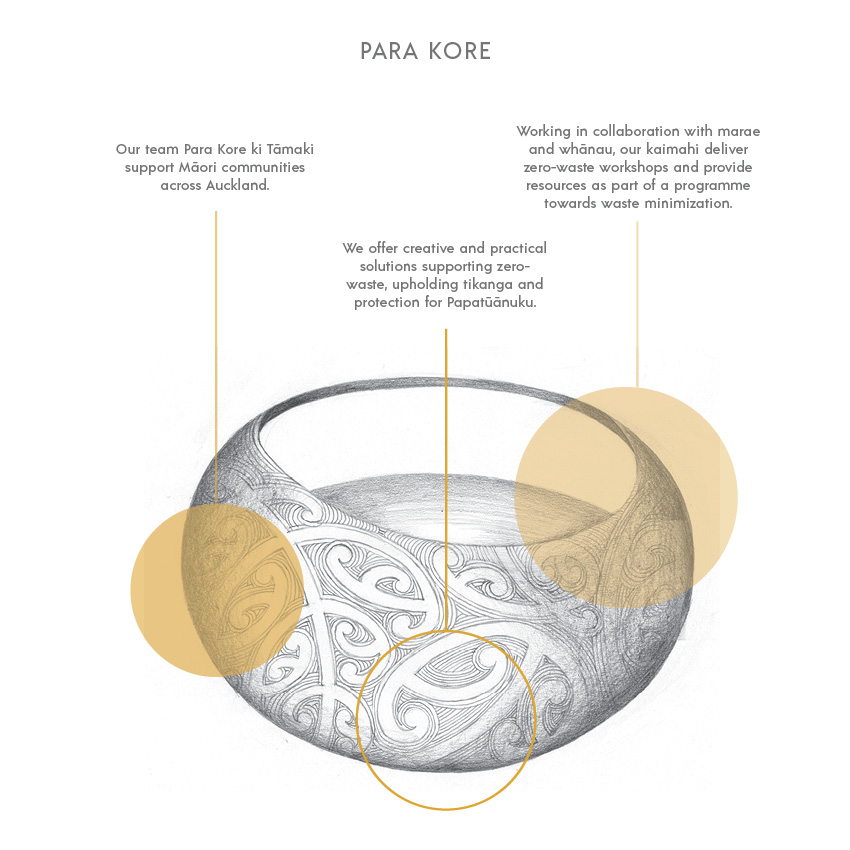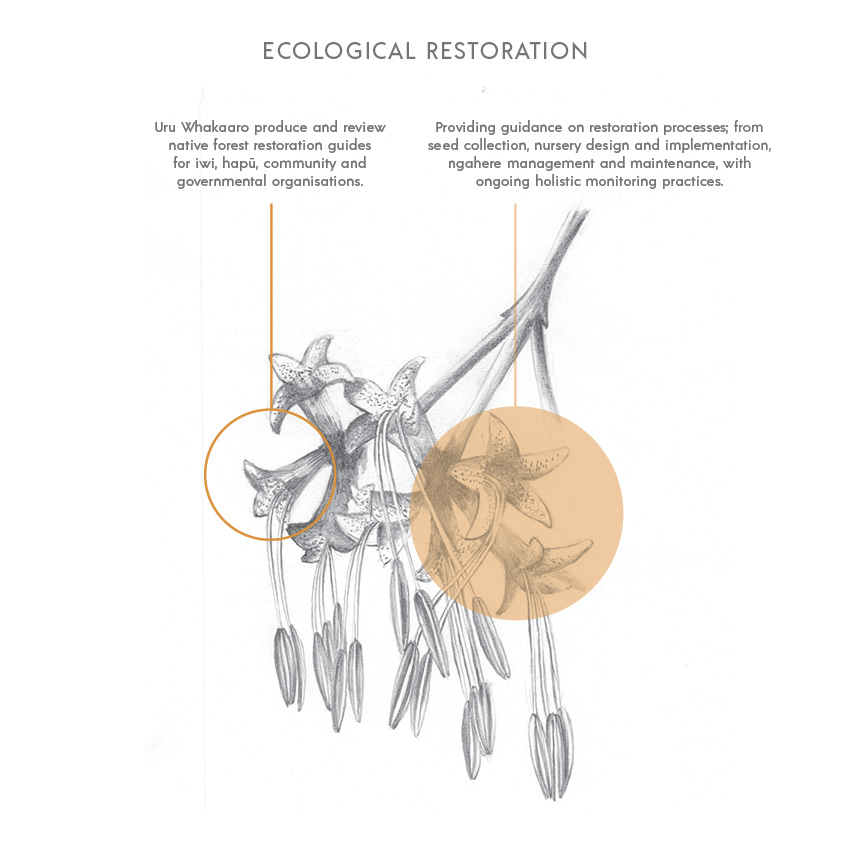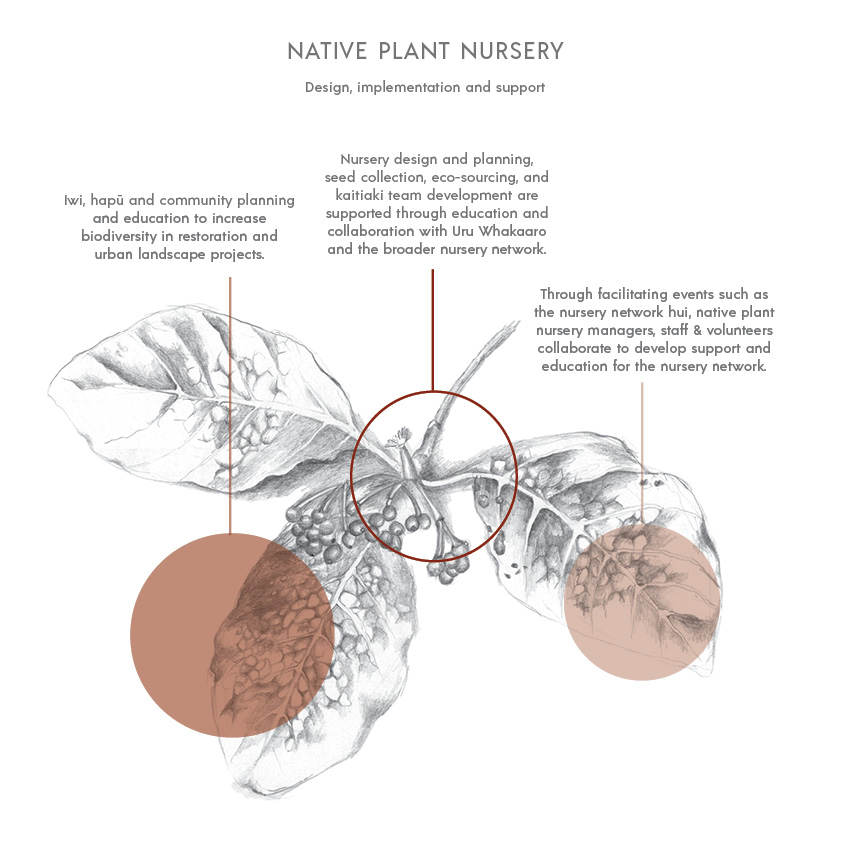-

Charmaine Bailie
she/her
He uri tēnei o Ngāti Whātua ki Kaipara. Ko Te Uri o Hau te hapū.
I’ve been a taiao practitioner working in restoration of diverse ecosystems and ethnobotanical landscapes for the past 30 years and I created Uru Whakaaro to work collaboratively with iwi, and community to support long-term sustainable outcomes.
My favourite rākau is the pūriri due to its strength, form and all year round provision for kererū.
-

Mike Wyatt
he/him
Ko Te Uri o Hau te hapū, Ko Ngāti Whātua ki Kaipara te iwi.
My role at Uru currently is Operations Manager, but can easily slot into any role when required to.
Love working on the whenua, with my favourite bird being the kererū for their size and their colours.
-

Ariki Wyatt
he/him
Ko Te Uri o Hau te hapū, Ko Ngāti Whātua ki Kaipara te iwi.
I joined Uru Whakaaro in 2022 and have since my role has been in facilitating workshops and Para Kore initiatives, coordinating volunteers and providing overall support across the Uru team.
My favourite rākau is kauri, due to their mighty, ancient nature and their important role as kōhanga for the tamariki of Tāne Mahuta.
-

Israel Poe
he/him
Ko Israel au, O le Aiga a Poe a, Ou te mai mai Faleula.
I joined the Uru Whakaaro team in January 2025 and I am mainly working in the Para Kore ki Tāmaki space, helping Māori communities through workshops and zero waste initiatives while also learning about our native ecology and ecosystems.
My favourite rākau is Kahikatea because it’s our tallest native tree and for the role it plays in being a food source and home for our native birds and insects.
-

Arahi Sionetali Rattray
she/her
Tēnei he iti nō Ngāti Kahu - Muriwhenua, Ngā Kuki Airani me Niue anō hoki.
My role here is predominantly in supporting resource development, giving guidance around kaupapa Reo Māori, and providing support to our kai mahi here at Uru Whakaaro
As a kairaranga, my art is largely based in kaitiakitanga and the overall preservation of our resources from the taiao. I am passionate about safeguarding and maintaining these resources mō ngā uri whakaheke, in hopes that they will continue to be accessible for generations to come.

